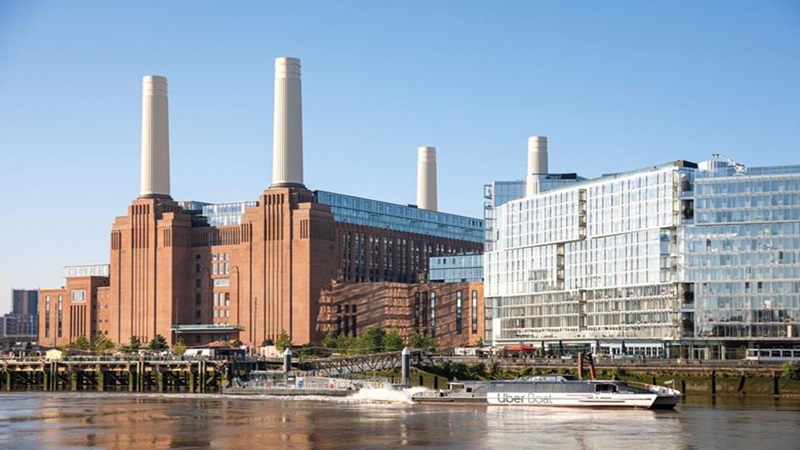Perspectives
Unleashing the opportunity in complexity
Complex construction projects are an opportunity to reimagine spaces and achieve ambitious aims. But what does it take to truly unleash the opportunity in complexity?
Mace is no stranger to complex construction projects. We’ve applied our experience and expertise to some of the most challenging in the UK - from the Shard and Tottenham Hotspur Stadium to the Battersea Power Station redevelopment and Paddington Square. But throughout these builds, what have we learnt? With so many moving parts, logistical challenges and stakeholders, there’s no one-size-fits-all approach. However, there are four golden rules to keep in mind from the outset.1. Take control early - The significance of pre-planning
The sheer level of complexity involved in projects like these heighten the risk of missing both deadlines and targets. So firstly, the key to mitigating these risks lies in the all-important, pre-construction planning phase.
The pre-planning process is a thoroughly detailed evaluation of the scheme, to give the entire project team a comprehensive understanding of the scope of work, characteristics and constraints for the site, the resources needed, and supply required, the risks, interfaces and impacts on stakeholders, as well as costs.
Providing clarity is crucial. In Mace’s 2020 report ‘A Blueprint for Modern Infrastructure Delivery’ we looked at 10 ways a major project or programme can guarantee success and topping that list was ‘clear outcomes.’ The report found that organisations and projects that had a clear and coherent stated outcome and success criteria were most likely to succeed. With this in mind, this outcome should be as simple as possible and clearly communicated.
Of course, outcomes and success criteria can’t be defined in isolation. Detailed technical input from the various stakeholders – which in turn shapes the project team’s composition – is essential. Development managers, specialists and the supply chain must collaborate with clients from the outset; to maximise efficiencies, but to also gain a true understanding of intent from the early stages.
The beginning of the planning process also marks the moment where significant cost and time savings can be identified, quality and safety risks can be reduced, and carbon reduction measures can be expedited. Ultimately, success depends on setting out a stall as early as possible and taking the entire project team on the journey.
Pre-planning is, in itself, a major undertaking and can take two or more years to complete. But its importance can’t be overstated. Too often, inadequate time allowance for pre-planning sows the seeds for complex projects to go wrong.
2. Get the culture right
With a strong and engaged team onboarded, it’s vital that the right environment is set up to foster creativity and innovation. So with a major and complex programme, conscious thought must be given to creating and nurturing a culture that encourages ideas, solutions and personal growth.
Senior business leaders (in both client and contractor organisations) hold key roles of influence here, able to play a part in supporting this mindset and encouraging teams to think differently than they might usually. It’s vital to expect the unexpected - as, despite the importance of pre-planning, not everything will follow suit.
A growth mindset must be harnessed, working on the basis that nothing is impossible and that there are always solutions to be found. On multi-faceted programmes, it’s common to assume someone else will have already thought of something or that the expectation is to ‘stay in your lane’. That’s why it’s important to promote a culture of transparency and curiosity. In reality, nothing is 100% new or unique – most things have been done in a similar way before.
3. Continuous learning and improvement
Crucial to the success of any complex project is continual learning and improvement. In his widely acclaimed book ‘Black Box Thinking’, British journalist, Matthew Syed, posits that in a complex world, failure is investable. But the question is, do we learn from mistakes or conceal and self-justify them?
Syed compared the airline industry, which hadn’t had a single fatality in 2017, to the healthcare industry which had registered casualties at the rate of two jumbo jets crashing every 24 hours – all due to errors or mistakes.
Syed proposed that the difference between the two sectors, was their approach to those errors – the aviation industry encouraged people to own up to mistakes and learn from them, something healthcare was found to do less of. The hospitals that reported the most errors and near misses were in fact the safest, because they were open and honest about any oversights.
These lessons can be equally applied to a complex project. It is critical that on any project, errors are identified early and lessons are learnt, with those lessons then shared across the wider team for full transparency.
4. Think of the bigger picture
Lastly, always think of the bigger picture. Think of complex projects as more than a series of risks and difficulties. They’re a chance to make innovative use of materials, construction and delivery methods, collaborative approaches and lateral thinking. Always look for new perspectives - from outside the immediate sector or from other industries entirely - and contemplate what can be co-opted from alternative approaches.
By their very nature, complex projects are challenging. But with broadened horizons, a collaborative and transparent culture and a shifted mindset, engaging contractors earlier on and having a comprehensive pre-planning phase, they can become an even greater opportunity to redefine the boundaries of ambition and reimagine what a development can become - injecting new dynamism into places, leaving a legacy for generations to come.











